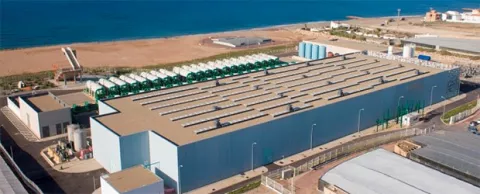
The world is already suffering a serious water shortage. The United Nations estimates that 20% of the world’s population live in communities where water supplies are already short. That number is double if you count temporary shortages.
It’s a pressing issue for cities and one that is only forecast to get worse. From stretching aquifers to installing water ATMs, here are how some enterprising communities are quenching their communities’ thirst.
An underground savings account
Like many cities, the Minneapolis, Minnesota suburbs of St. Michael, Hanover and Albertville have plenty of water some months, but have to rely on stored water supplies to get them through others. And as populations grow, that storage is expensive to build. So, the cities turned to an underground solution, using natural storage that was already built.
Normally, cities think of drawing water from underground aquifers, but the three are working with Council Associate Partner Veolia to pump water into one. They will top off the natural supply in the winter months when water is plentiful and draw from it in the summer.
The cities call it an “underground savings account” and say that they should be able to store 100 million gallons of water this way.
Salt water that quenches thirst
More coastal communities are looking to desalination to meet their water needs. Veolia has just powered up one of the biggest desalination plants in Europe.
The Campo Dalías seawater desalination plant is now online in southern Spain, providing enough water for drinking and irrigation for 300,000 people. There’s also room to grow. It was designed with future growth in mind. Upgrades could expand its capacity by another third.
A cute water story
The island nation of Singapore has had more people than water for decades, forcing it to import water from Malaysia, among other solutions. As it tries to reduce its reliance on imported water, it has begun reclaiming water, extracting some from sewage. But that can be a tough sell for citizens.
So Singapore has launched an education campaign to help citizens understand why recycled water is needed and how it is safe. One component of the campaign is a video that’s narrated by a young girl. (You can watch the video below.)
A water umbrella
California, which is struggling under a prolonged drought, is trying to save the limited amount of water that it does have in its reservoirs. Los Angeles is stretching the supply of water in its reservoir by releasing 96 million shade balls into it to reduce evaporation. The black hollow balls cover the surface of the reservoir, blocking the sun’s rays from reaching the water.
The shade balls are one of several approaches the state is using to try to stretch water supplies after the worst three-year drought in its recorded history. It’s also preaching conservation and citizens appear to be getting the message. Water consumption dropped by nearly a third in July, ahead of the state’s targets.
Withdrawals from the water ATM
In India, where nearly 100 million people lack access to clean drinking water, new water machines that work like bank ATMs may soon be able to help.
To get clean water, residents just need to go to one of the machines and place a container under the tap. The machine purifies raw water using ultrafiltration technology so that it’s safe to drink. Residents pay for the water using a pre-paid water card that works like a debit card.
The machines are made by the Danish company Grundfos, which is working with the government to find places for them so they can reach communities that are most in need.
More stories …
Worried about water? How to find up to 30% more
How to plug your water supply’s (money) leaks
#CCEOST#



